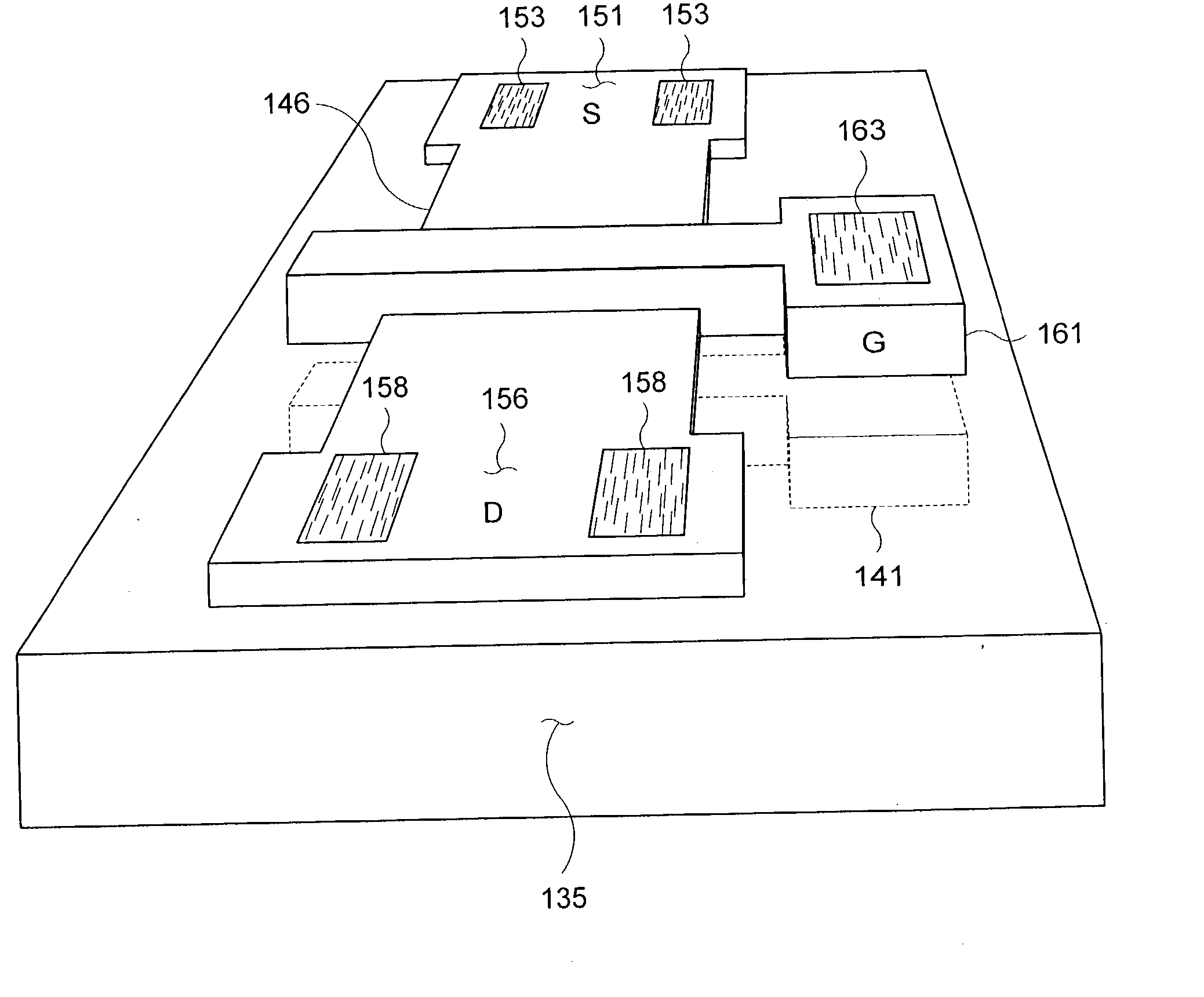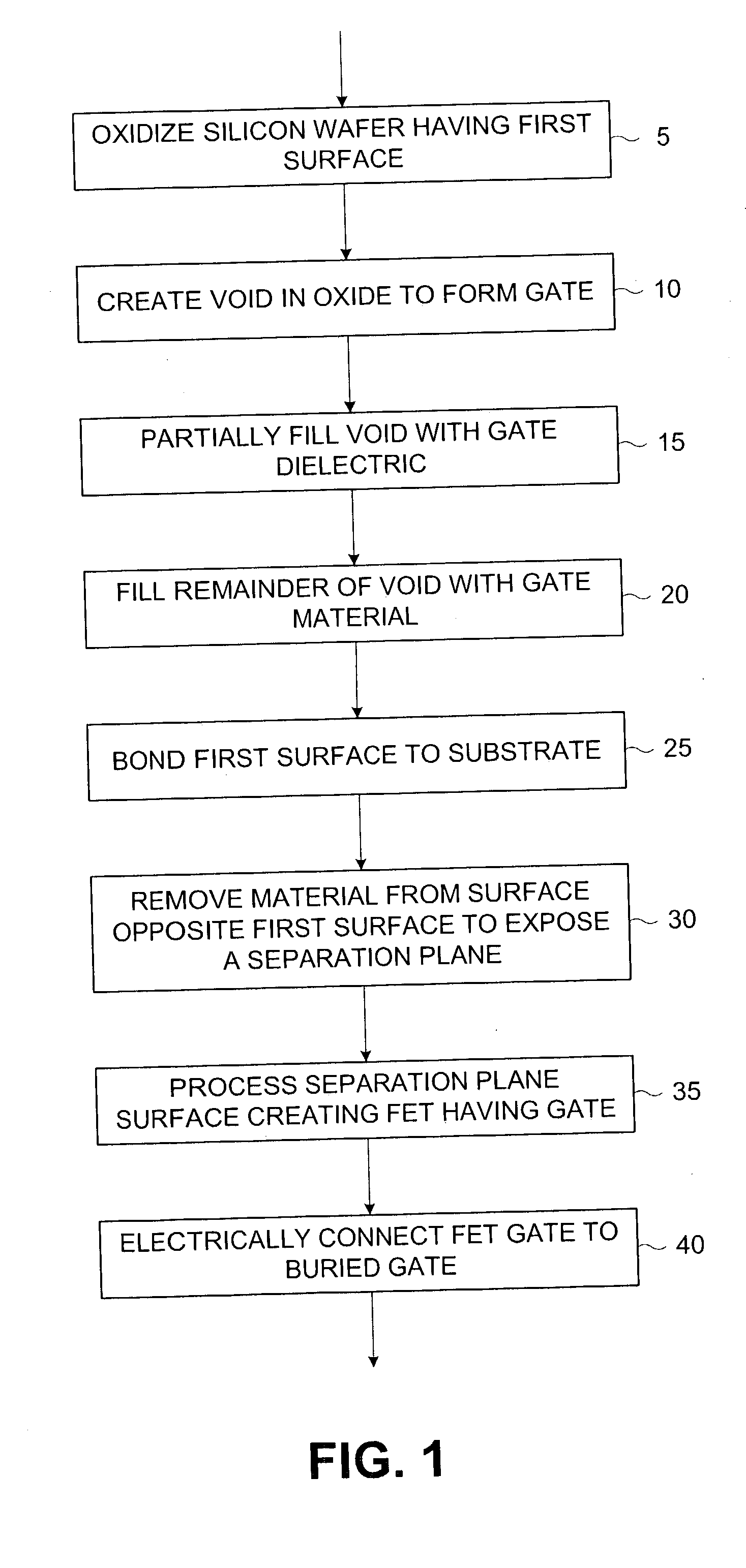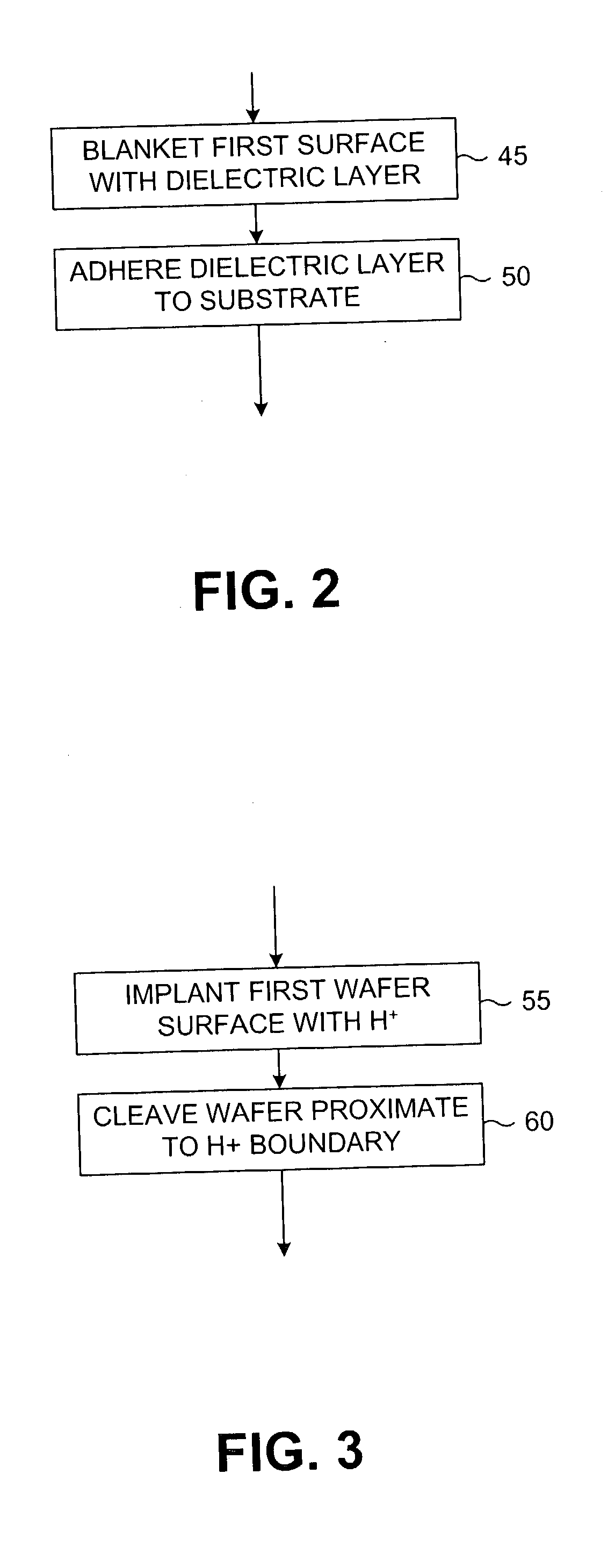All-around MOSFET gate and methods of manufacture thereof
a technology of mosfet gate and mosfet channel, which is applied in the direction of transistors, semiconductor devices, electrical appliances, etc., can solve the problems of wasting space, wasting space, and wasting effort in developing efficient fabrication methods, and achieve the effect of prolonging the duration of the contact etch process
- Summary
- Abstract
- Description
- Claims
- Application Information
AI Technical Summary
Benefits of technology
Problems solved by technology
Method used
Image
Examples
Embodiment Construction
[0028] The present invention comprises a method of fabricating a metal oxide semiconductor field effect transistor (MOSFET) that supports an arbitrarily wide channel and that has a gate structure that completely surrounds the channel. The invention therefore addresses the problems associated with prior art gate-all-around MOSFETs and related technologies. The method represents an enhancement to traditional silicon-on-insulator (SOI) circuit fabrication techniques wherein processing of bonded SOI wafers currently is performed on a thin transferred wafer slice after bonding to a “handle” wafer. The invention teaches that processing can be done on the “back” of the thin slice to be transferred before it is separated from its parent wafer. The invention provides a useful method of building an all-around gate MOSFET and way of constructing very wide MOSFETs on the same circuit.
[0029]FIG. 1 is a flow diagram that describes one example variation of a method for preparing a channel gate ac...
PUM
 Login to View More
Login to View More Abstract
Description
Claims
Application Information
 Login to View More
Login to View More - R&D
- Intellectual Property
- Life Sciences
- Materials
- Tech Scout
- Unparalleled Data Quality
- Higher Quality Content
- 60% Fewer Hallucinations
Browse by: Latest US Patents, China's latest patents, Technical Efficacy Thesaurus, Application Domain, Technology Topic, Popular Technical Reports.
© 2025 PatSnap. All rights reserved.Legal|Privacy policy|Modern Slavery Act Transparency Statement|Sitemap|About US| Contact US: help@patsnap.com



